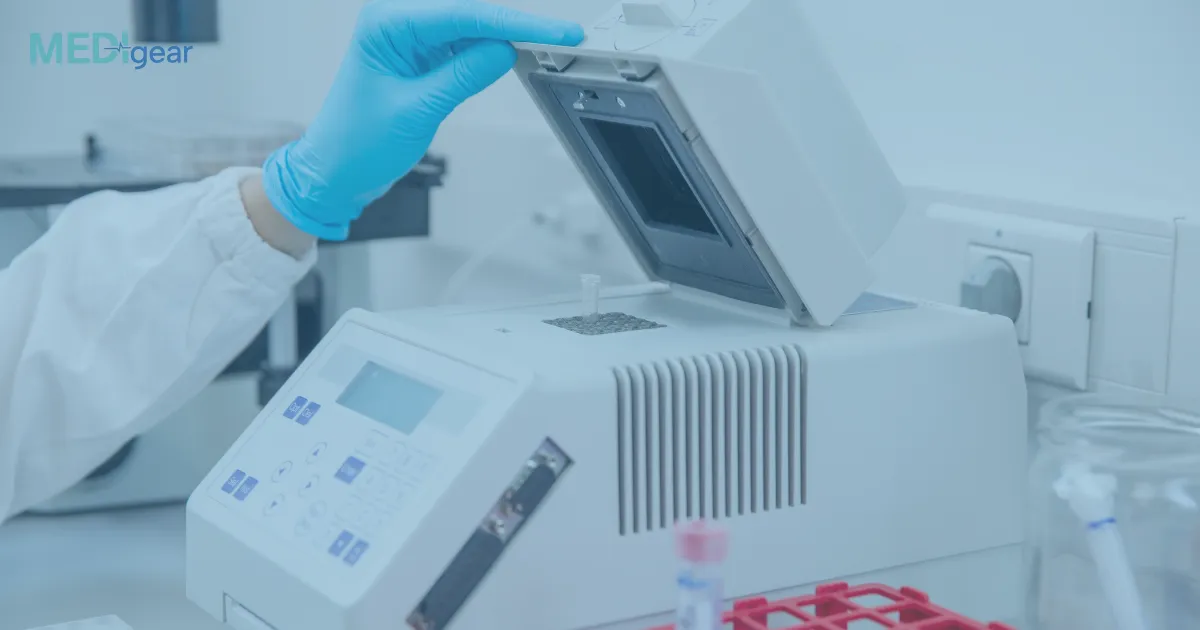Polymerase Chain Reaction (PCR) machines have revolutionized modern diagnostics by providing rapid, highly sensitive, and accurate detection of pathogens, including viruses, bacteria, and other infectious agents. These devices are widely used in clinical laboratories, hospitals, and research centers to identify infections, monitor outbreaks, and guide treatment decisions.
Understanding PCR Technology
PCR is a molecular technique that amplifies specific segments of DNA or RNA from a pathogen, producing millions of copies from a tiny amount of genetic material. This amplification allows clinicians and researchers to detect even trace amounts of pathogens in patient samples such as blood, saliva, or nasal swabs.
PCR machines, also known as thermocyclers, precisely control the temperature cycles required for DNA denaturation, primer annealing, and extension—key steps in the amplification process. Modern PCR platforms often integrate real-time detection (qPCR), enabling quantitative measurement of pathogen load.
How PCR Machines Detect Pathogens
- Sample Preparation
Patient samples are collected and processed to extract nucleic acids (DNA or RNA) from the pathogen. - Amplification
Using pathogen-specific primers, the PCR machine repeatedly copies target sequences through temperature cycling. - Detection
Fluorescent dyes or probes indicate the presence and quantity of the target genetic material. In real-time PCR, the increase in fluorescence correlates with the number of pathogen copies, allowing rapid detection and quantification. - Analysis and Interpretation
Clinicians receive results indicating whether a pathogen is present, its type, and in some cases, the viral or bacterial load, which helps determine disease severity and treatment strategies.
Clinical Applications of PCR in Pathogen Detection
- Infectious Disease Diagnosis: Detects pathogens causing COVID-19, influenza, tuberculosis, HIV, and more.
- Epidemiological Surveillance: Identifies outbreaks early by detecting pathogens in patient populations or environmental samples.
- Antimicrobial Resistance Monitoring: Helps detect genetic markers associated with antibiotic resistance.
- Blood and Organ Screening: Ensures donor safety by screening for infectious agents.
- Research and Vaccine Development: Quantifies viral or bacterial load for experimental and clinical studies.
Advantages of PCR Machines
- High Sensitivity and Specificity: Detects even low levels of pathogens.
- Rapid Turnaround: Provides results in hours compared to days with traditional culture methods.
- Quantitative Measurement: Real-time PCR offers pathogen load estimation.
- Versatility: Detects DNA, RNA, or both; adaptable to multiple pathogens in a single run.
Conclusion
PCR machines are a cornerstone of modern diagnostics, providing fast, accurate, and reliable pathogen detection. Their ability to detect infections early and precisely has transformed patient care, outbreak management, and clinical research. By integrating PCR technology into laboratories worldwide, healthcare professionals can identify pathogens, guide treatments, and improve patient outcomes.
Disclaimer
This article is intended for educational and informational purposes only. It is not a substitute for professional medical advice, diagnosis, or treatment. For concerns regarding infectious diseases or testing, consult a qualified healthcare provider.






